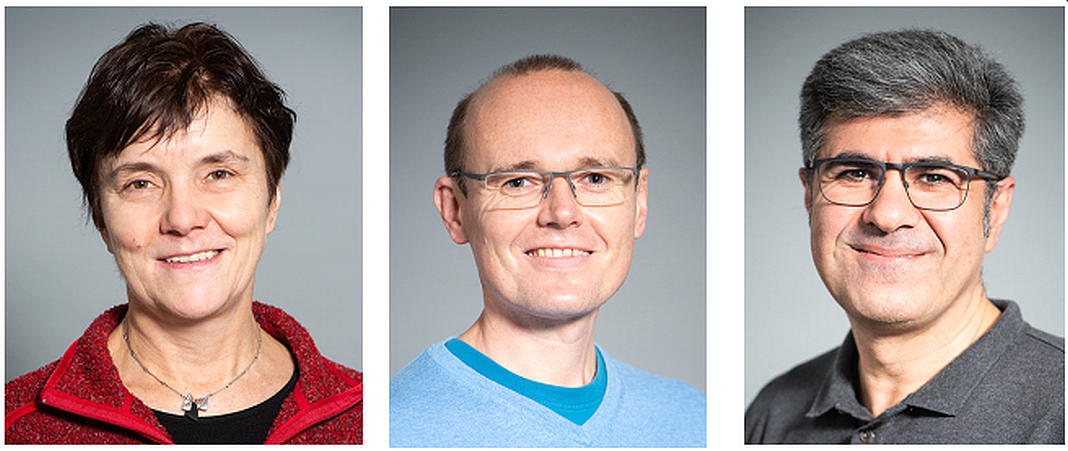AG Kraft

Hypertrophic Cardiomyopathy: Contractile Imbalance as a central pathomechanism? Investigations on human myocardium and cellular models.
Research focus
One of our central goals is to elucidate how mutations in sarcomeric proteins disrupt sarcomere function in cardiomyocytes and lead to hypertrophic cardiomyopathy (HCM).
A key observation of our research was that the extent of functional changes caused by HCM mutations in cardiomyocytes of affected heterozygous patients is very different among cardiomyocytes isolated from the same tissue. For example, some cardiomyocytes showed significantly reduced force development at physiological calcium concentrations, while others behaved like healthy cardiomyocytes at the same calcium concentration as if no mutated protein was expressed in these cells. Meanwhile, we have been able to show for β-cardiac myosin heavy chain (β-MyHC) and cardiac troponin I (cTnI) that in each of the patients studied, individual cardiomyocytes from the same tissue express very different proportions of mutated and wild-type mRNA of the respective gene. This most likely leads to correspondingly different proportions of mutated and wild-type protein and thus to the observed variability of biomechanical function from cell to cell. Our hypothesis is that the resulting functional variability between neighboring cardiomyocytes in the cellular network of the myocardium causes distortions of the cardiomyocytes, which over time lead to typical features of HCM such as cellular and myofibrillar disarray, hypertrophy and fibrosis (“contractile imbalance” hypothesis).
So far, we were able to show that the observed cell-to-cell variability of the fraction of mutated mRNA is most likely a consequence of a burst-like transcription mechanism of mutated and wild-type alleles which is random and independent for both alleles. Model calculations confirmed the hypothesis that independent, burst-like transcription of the two alleles can lead to different proportions of mutated and wild-type protein in the individual cardiomyocytes and thus to the observed functional variability. According to this concept, a mutation in a sarcomeric or even non-sarcomeric protein (e.g. kinases), which produces a change in the biomechanical function of the sarcomere or myofibril, can lead to a functional imbalance between individual cardiomyocytes via random, burst-like transcription, and thus contribute to the development of HCM.
Aims are to identify primary functional effects of HCM mutations also in other sarcomeric proteins at the molecular level and to characterize them from cell to cell by investigating myocardial tissue from HCM patients. Furthermore, we analyze changes in signaling pathways at the single cell level, which are induced due to contractile imbalance and which can lead to hypertrophy and fibrosis. Finally, it is of great importance to elucidate mechanisms of burst-like transcription of the affected genes for sarcomeric proteins in cardiomyocytes to be able to modulate the expression, aiming at new therapeutic approaches.
These topics are being investigated together with the research groups Montag and Iorga on myocardial tissue from HCM patients and on cellular models based on stem cell-derived cardiomyocytes with HCM mutations. Apart from this, we are working with research group Montag on a pig model for HCM with a point mutation in β-cardiac myosin. The aim is to be able to examine different aspects of the course of the disease longitudinally. Our cell culture models as well as the animal model enable us to further investigate the contractile imbalance hypothesis, and to derive new treatment options for early prevention of the development of HCM. Last but not least, by investigating the primary functional effects of HCM mutations, we also gain insights into the relevance of individual proteins or their subdomains for the function of the sarcomere.
Group members
Prof. Dr. rer. nat. Theresia Kraft
Dipl. Ing. (FH) Faramarz Matinmehr
Qualification work
cand med. Vanessa Dieling
Publicationen
General list of publications of the institute
Teaching
- Lecture in "Physiology and Physical Basics of Medicine" for students of human medicine (HM) and "Physik-Physiologie" dentistry (ZM) in the 1st and 2nd year of study on the topics of skeletal muscle, smooth muscle, vegetative nervous system, heart, blood, acid-base balance, energy expenditure, exercise physiology
- Lecture in “Clinical Medicine 1” for medicine students (3rd year of study) on the subjects of thrombosis/embolism, pneumonia, heart failure
- Lecture in "Physiology" in the interdisciplinary bachelor course in biology of the Leibniz University, Hannover Veterinary School and Hannover Medical School on the subjects of skeletal muscle, smooth muscle, heart
- Lecture in "Physiology" in the master course in biomedicine of Hannover Medical School on the subjects vegetative nervous system, heart
- Practical training in "Physiology and Physical Basics of Medicine" for students of medicine and biology and " Physik-Physiologie" dentistry on various topics
- Seminars in "Physiology and Physical Basics of Medicine" for medicine students on various subjects
Teaching of the Center Physiology